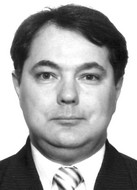Physical education system evolution in Russian statehood establishment period
Фотографии:
ˑ:
PhD A.L. Yurchenko1
PhD, Associate Professor О.G. Zhigareva1
PhD, Associate Professor V.L. Anurov1
A.S. Sidorov1
1Financial Universit under the Government of the Russian Federation, Moscow
The study analyzes the philosophical and practical aspects and the most important factors of influence on the youth physical education system from the early days of the Russian statehood to the beginning of the Romanov’s royal family reign in Russia. Using the historical, retrospective, comparative, quantitative and statistical data analyses, the authors identified and rated the key factors and historical events of the highest effect on the physical education models and progress in the pre-Peter-the-Great period. The study restored the physical education model applied by the prince’s armed forces in the early days of the Russian statehood. For the historical fairness, we propose to revise the traditional view of the Vyborg treaty of military alliance and support of 1609 reached by Sweden and Russia and its implications. We believe that the Vyborg treaty provided a basis for the mass physical and combat training of volunteer corps for the military actions against the Polish invaders. The study data and findings may be of interest for the physical education and sport specialists, healthy lifestyle proponents and historians.
Keywords: physical education, family-ancestral emphasis, focused training, tutorship, mass education models, systemic process.
References
1. Ablaev Yu.M. Istoriya stanovleniya i razvitiya gosudarstvennoy granitsy na Severo-Zapade Rossiyskoy Federatsii X–XX vv.. Dis. dokt. ist. nauk [History of formation and development of the state border in the North-West of the Russian Federation X-XX centuries. Doct. diss. (Hist.)]. St. Petersburg, 2012, 479 p.
2. Wallhausen I.Ya. Uchenie i khitrost ratnogo stroeniya pekhotnykh lyudey. 1647 god: 1647 god'. Uchenie i khitrost ratnago stroeniya pekhotnykh lyudey [Teaching and cunning of military structure of infantry. 1647: 1647 year. The study and cunning of military structure of infantry]. Мoscow: Kniga po trebovaniyu publ., 2012, 357 p.
3. Demeter G.S. Ocherki po istorii otechestvennoy fizicheskoy kultury i olimpiyskogo dvizheniya [Essays on history of physical culture and Olympic Movement]. Moscow: Sovetskiy sport publ., 2005, 324 p.
4. Zayakin B.N. Podgotovka voinov s mladeney [Training soldiers from childhood]. www.proza.ru/2009/05/25/769 (Date of access: 23.11.2017).
5. Nikiforov A.A. Istoriko-ekonomicheskiy analiz metodov regulirovaniya sporta v Rossii s drevneyshikh vremen do nashikh dney. Dis. kand. ekon. nauk [Historical and economical analysis of sport control methods in Russia from ancient times to present day. PhD diss.]. St. Petersburg, 2012, 174 p.
6. Pohlebkin V.V. Otnosheniya mezhdu Shvedskim i Russkim gosudarstvom v XIII-XIX vv. (1142-1874 gg.) [Swedish-Russian Relations in the XIII-XIX centuries. (1142-1874)]. Moscow: Mysl publ., 1999, 150 p.
7. Samsonov A.V. Russkie druzhiny v boyu [Russian squads in battle]. Available at: https:topwar.ru/26039-russkie-druzhiny-v-boyu- chast-6.html (Date of access: 23.11.2017).
8. Yurchenko A.L. Evolyutsiya fizicheskoy podgotovki v sisteme voennogo obrazovaniya [Evolution of physical training in military education system]. Aktualnye problemy fizicheskoy i spetsialnoy podgotovki silovykh struktur. St. Petersburg, 2010, no. 2(19) 2010, pp. 11-16.




 Журнал "THEORY AND PRACTICE
Журнал "THEORY AND PRACTICE